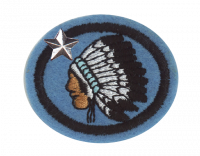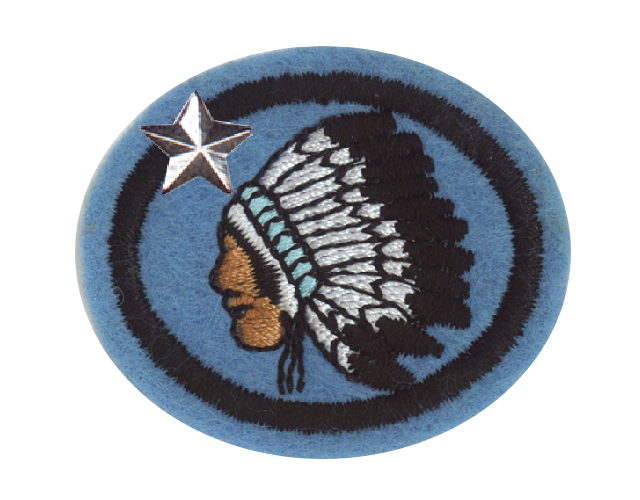Difference between revisions of "AY Honors/Native American Lore - Advanced/Answer Key/es"
(Created page with "{{clear}}") |
(Created page with "<noinclude>") |
||
| Line 261: | Line 261: | ||
<noinclude></noinclude> | <noinclude></noinclude> | ||
| − | + | <noinclude></noinclude> | |
| − | <noinclude | ||
| − | |||
{{CloseReq}} <!-- 11a --> | {{CloseReq}} <!-- 11a --> | ||
{{ansreq|page={{#titleparts:{{PAGENAME}}|2|1}}|num=11b}} <!--T:86--> | {{ansreq|page={{#titleparts:{{PAGENAME}}|2|1}}|num=11b}} <!--T:86--> | ||
Revision as of 16:18, 2 May 2021
Nivel de destreza
2
Año
1976
Version
25.11.2024
Autoridad de aprobación
Asociación General
1
Para consejos e instrucciones, véase Artes y trabajos indígenas.
2
3
4
We do not recommend that you attempt to treat any sicknesses using the plants listed here. Doing so could certainly endanger your health.
5
- a. Tribus localizados allí
- b. Hogares y las prendas de vestir
- c. Artesanía nativa realizada como: cestería, cerámica, alfombras, etc.
- d. Las prácticas religiosas
- e. Forma de gobierno
The four divisions of Northeast, Southeast, Northwest, and Southwest are not really the best way to categorize Native American culture, as it excludes some major cultural societies that do not fit neatly into these four categories. In addition to these four, we also present the culture of the Plains Indians. Cultures from California, the Great Basin, the Plateau, Arctic, and Subarctic regions of North America could also be included.
Northeast
Homes
<gallery perrow=2 widths=300px> File:Wigwam Indigenous peoples.JPG|A typical wigwam in the Northeast has a curved surface which can hold up against the worst weather. The male of the family was responsible for the framing of the wigwam. Young green tree saplings, of just about any type of wood, about ten to fifteen feet long were cut down. These tree saplings were then bent by stretching the wood. While these saplings were being bent, a circle was drawn on the ground. The diameter of the circle varied from ten to sixteen feet. The bent saplings were then placed over the drawn circle, using the tallest saplings in the middle and the shorter ones on the outside. The saplings formed arches all in one direction on the circle. The next set of saplings was used to wrap around the wigwam to give the shelter support. When the two sets of saplings were finally tied together, the sides and roof were placed on it. The sides of the wigwam were usually bark stripped from trees.
6
- Eagle feathers
- Peyote (a spineless cactus)
- Eagle bone whistle
- Peace pipe
- Drums
- Gourd Dance Eagle Fan
- Gourd rattle
- Medicine wheel (stones structure)
- Smudge stick (charred bundle of dried herbs)
- Sweat lodge
- Tomahawk
- Wampum
7
Arrowheads are typically mounted in a shadow box. This is a shallow wooden box with a removable glass cover. The bottom of the box is covered with a photo framing mat. The arrowheads can be sewn to the mat with monofilament, tied down with leather lacing, or they can be glued down. If gluing, be sure to use a reversible glue, such as hot melt.
8
It is probably best to leave the repair of a valuable artifact to a professional. We do not intend to provide instruction here in sufficient detail to allow a Pathfinder to attempt a repair, but rather outline the procedures used.
Arrowheads
Broken arrowheads can usually be glued back together using Cyanoacrylate (such as Superglue, or Krazy Glue). Apply a drop or two of glue to one surface, join the pieces together, and hold them in position for a minute to allow the glue to set. Once it sets, leave it alone for a couple of hours. If any glue came to the surface of the crack, scrape it off with an X-Acto knife.
9
A careful reading of the material detailed in requirement 5 provides ample information for this requirement.
10
The dying process
11
11a
11b
See the Wikipedia category Mound builders for a list of several Indian mounds throughout the United States.
11c
If you know a Native American, invite him or her to speak to your Pathfinder club. If you do not personally know a Native American, find an Indian museum as described in section a of this requirement and contact them. They may be able to put you in touch with a Native American who is willing to share his or her culture with you.
11d
There are about 300 Indian reservations in the United states. Wikipedia has a List of Indian reservations in the United States. In Canada, these are called Indian reserves, and Wikipedia has an article covering those as well.
References
- A Manual of Mending & Repairing By Charles Godfrey Leland, Published by Dodd, Mead and Co., 1896. Original from the University of Michigan, digitized by Google Oct 6, 2006
- w:Classification of indigenous peoples of the Americas


